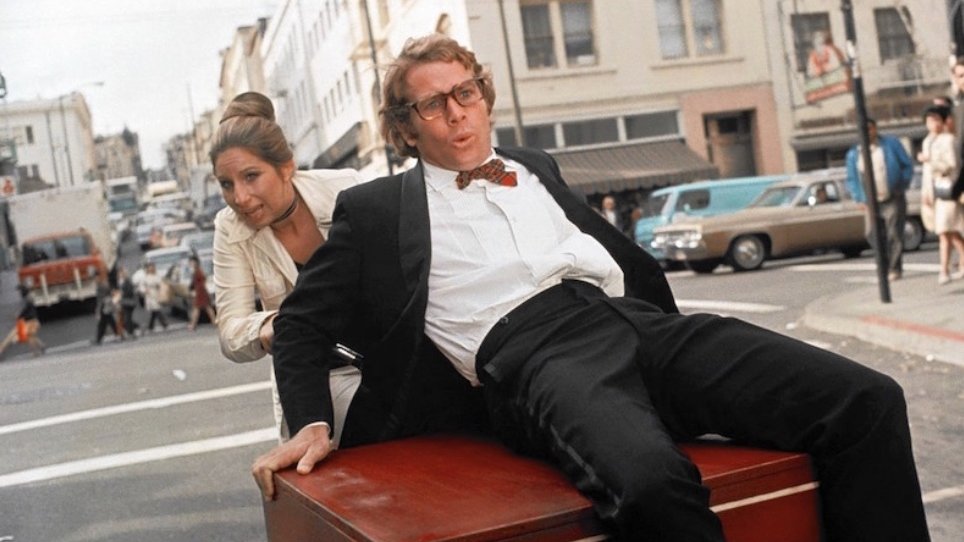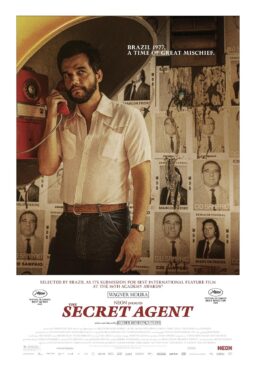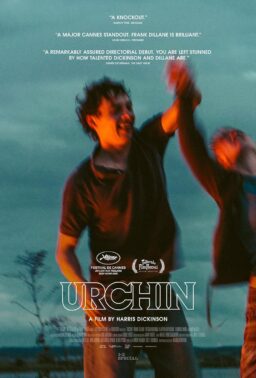Roger Ebert once said that Great Movies should feel fresh every time you watch them, but I’ve come to wonder if this phrase applies to the beloved comedies from my early years. When I last sat down to watch “It’s a Mad, Mad, Mad, Mad World,” once considered the very definition of funny, I couldn’t even make it past the first hour; the same feeling occurred when I revisisted Blake Edwards’ once hilarious “Pink Panther” movies and to his own “The Party” (all starring Peter Sellers). With this predicament in mind I decided to take another look at one of the best examples of the early 1970s, Peter Bogdanovich’s 1972 screwball comedy “What’s Up Doc?”. If there was ever a movie that every kid from that era loved this was it, so there has to be something about it. Or is there?
“What’s Up Doc?” deals with several identical “plaid overnight cases.” The passionate pursuit of an object of desire by several neurotic characters has been one of the most effective plot devices in comedies, as proven by later greats like “A Fish Called Wanda” (1988) with its stolen diamonds and “There’s Something About Mary” (1999) with the character of Mary herself. In this setting we meet stiff, uptight, rock-loving, musicologist Howard Bannister (Ryan O’Neal), his nagging, bossy, neurotic fiancée Eunice Burns (Madeleine Kahn), and the ever-oblivious, quip-dispensing, know-it-all troublemaker Judy Maxwell (Barbra Streisand). The running joke here is Judy’s non-stop efforts to stop Howard, the apple of her eye, from marrying his unattractive girlfriend by intervening and destroying life as he knows it.
Watching the movie recently I still found some of the set pieces very funny. I liked the progressive destruction of Howard’s typical 1970s fancy (and simultaneously horrid) hotel room and O’Neal’s heroic efforts trying to summarize the events of the movie in front of a judge. But the film’s best and funniest scene by far is that where Howard denies knowing Eunice while having a discussion under a table with all of its occupants, as his fiancée pulls a receptionist through the floor and smashes her purse on everyone that stands in her way (Head Waiter: “What kind of wine are you serving in table one?!”). This sequence alone is worth the price of admission.
On the down side, the anxiously awaited, climatic chase scene in San Francisco was a bit of a letdown. “What’s Up Doc?” was obviously made in simpler times when we had yet to see a character crashing through a large window pane, when we had never seen a car’s door falling off as the punch line to it being crashed repeatedly, when we hadn’t yet seen dozens of chases in the steep hills of San Francisco, with vehicles at every intersection going on opposite directions to highlight the tension. It was also made at a time when hundreds and hundreds of movie characters were yet to fall into water for no good reason. Maybe it wasn’t this sequence that become uninteresting, it was the audience’s taste that changed through the years.
“What’s Up Doc?” was clearly designed as a vehicle for Streisand. Like most of her films (regardless of who directs them) this one is also a showcase for her singing. It is filled with loving close ups of her impeccably lit & made-up face. As usual, we never get to see her from her right side (a nuisance that has driven me nuts since Siskel & Ebert pointed it out about three decades ago). At least here she doesn’t take herself as seriously as usual and more importantly, the script provides her with an endless supply of terrific smart-aleck quips, clearly the inspiration of screenwriter Buck Henry.
Still, the most important factor in the picture’s success, one that I didn’t fully appreciate before, is the caliber of Streisand’s foe and victim (“Who is that dangerously unbalanced woman?!”). Eunice’s sole purpose in the script is to provide Streisand with someone to torture hilariously from start to finish. The writers obviously had to make her as obnoxious as possible, or Streisand wouldn’t have come off looking very well. The sequence where Judy calls Eunice and changes the address of a party the latter will be attending to that of a gangster’s liar, is truly a classic.
I wouldn’t go as far as to say that Kahn steals the movie from the two leads, but she makes everyone around her much funnier. Anyone who thinks that the picture is built solely on the chemistry between Streisand and O’Neal, clearly hasn’t seen their later reunion in the abysmal “The Main Event” (1979). Kahn makes an obnoxious character truly hysterical, one that simply can’t stop herself from acting un-supportive even in the rare occasions when she doesn’t mean to (“Try not to worry about it Howard but remember, everything depends on it!”). Even though O’Neal and Streisand will obviously end up together, the filmmakers still take the time to convey that in spite of all her imperfections, the appalling Eunice had a particular if unexplainable charm to the opposite sex. She’s even provided with a happy ending of her own in the form of another clueless boyfriend that she will be able to nag ’til death do them part.
I’ve heard claims that older comedies don’t work very well with modern audiences because their pace is slower than some are used to, but I don’t see this applying here. Even if some of this film’s once hilarious sequences are now merely amusing, there are other elements I missed on earlier viewings (such as about 90% of the quips) and they make watching it a worthwhile experience. Unlike more recent comedic examples, Bogdanovich’s film never resorts to increasing the level of vulgarities to get a few laughs from the audience.
Almost 50 years since its release, “What’s up Doc?” doesn’t feel anymore like the great event that I saw three times in its opening weekend (and several more as it bounced around the old beat movie houses of old). The movie remains pretty good, just not in the same ways that I used to recall. If other big comedies from the period now feel stale and dated, perhaps they just weren’t all that good to begin with.












